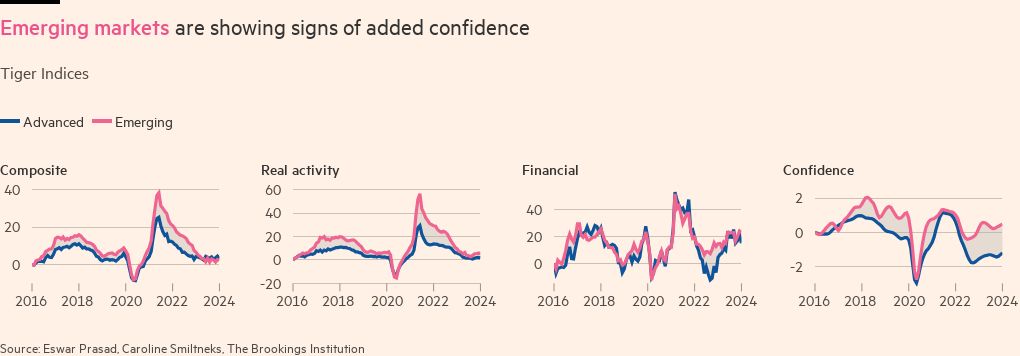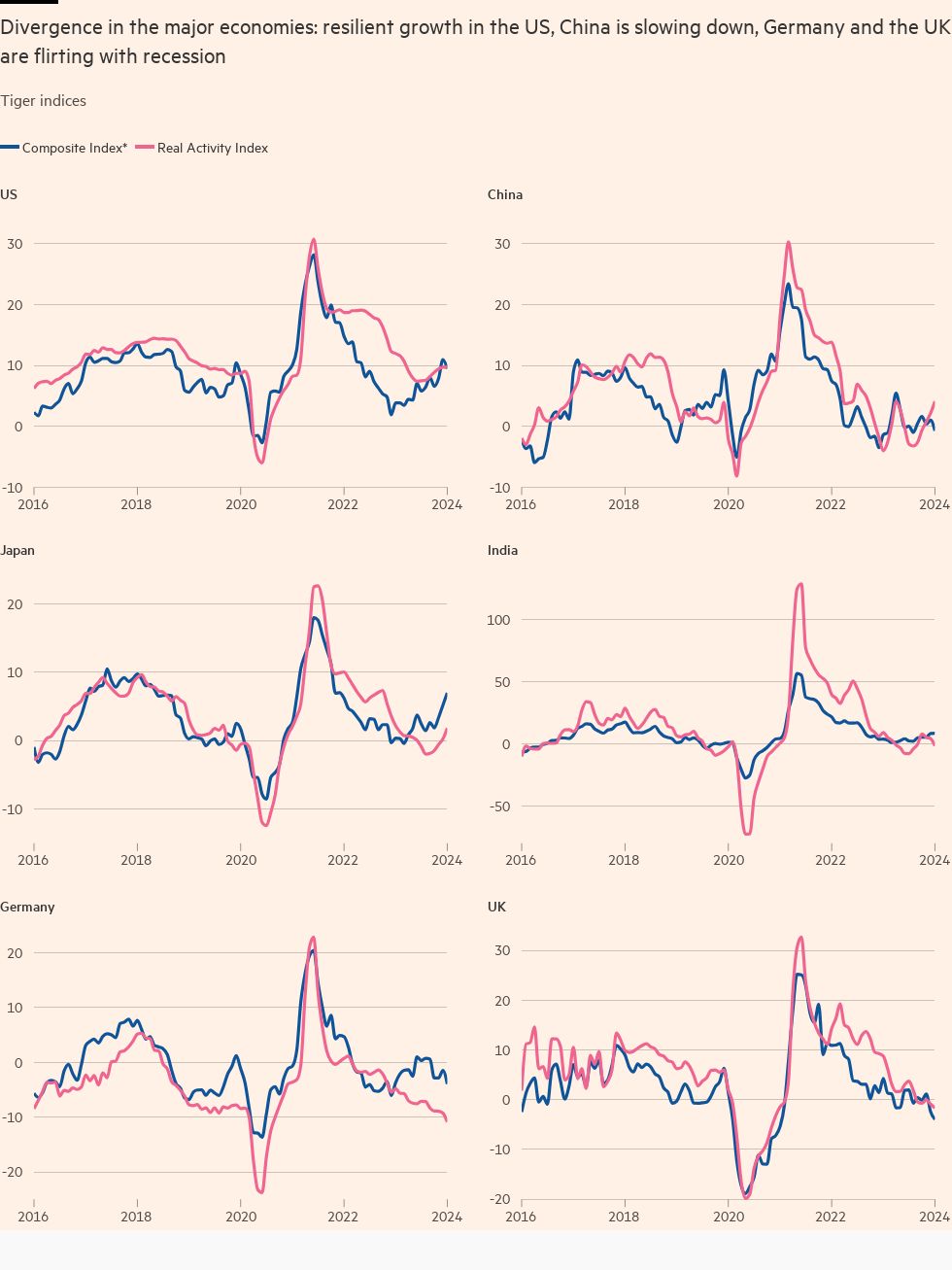Unlock the Editor’s Digest for free
Roula Khalaf, Editor of the FT, selects her favourite stories in this weekly newsletter.
Momentum in economies including the US and India has been picking up in recent months, helping stoke optimism that global growth in 2024 will modestly outpace last year’s reading, according to research for the Financial Times.
A gauge of the performance of the US economy, taking in measures of confidence, financial markets and real activity, has recovered to its highest levels since mid-2022, providing a bright spot amid a largely lacklustre global economic backdrop.
India has seen a similar pick-up, according to the latest edition of the twice-yearly Brookings-FT Tracking Index for the Global Economic Recovery, or Tiger.
The readings come as policymakers prepare to meet in Washington this week for the spring meetings of the IMF and World Bank.
Heading into the meetings the IMF has warned of a decade of disappointing growth and a rising risk of popular discontent as central banks continue to battle against inflation and governments struggle with high public indebtedness.
Geopolitical risks are also hanging heavily over the outlook as economic policymakers prepare to meet in the coming days. These include a worsening situation in the Middle East, after Iran launched a barrage of drones and missiles at Israel in retaliation for a suspected Israeli strike in Damascus.
The fund, led by Kristalina Georgieva, who has just secured a second term as its managing director, will publish updated economic forecasts this coming week.
These are expected to show firmer growth than in the previous update to the IMF World Economic Outlook in January, which suggested growth in global gross domestic product would stay at 3.1 per cent in 2024 and rise only incrementally to 3.2 per cent next year.
Eswar Prasad, senior fellow at the Brookings Institution, said the Tiger index readings provided “positive omens” for a modest pick-up in global growth this year relative to 2023, with the US establishing itself as the key driver of this modest improvement to the economic outlook.
Despite the procession of interest-rate increases by the Federal Reserve aimed at quelling inflation, the US economy was “chugging along” with even a mild recession looking unlikely, Prasad said.
“The US continues to surprise everyone,” he said. It had proven “remarkably resilient, with a red-hot labour market and rising equity prices feeding into strong business and consumer confidence, in turn boosting domestic demand.”
The strength of the US economy, combined with stubborn inflation, has curbed speculation that the Fed will be in a position to trim back interest rates as soon as June. This has in turn led to a wider rethink about how soon other big central banks will be willing to dial back their tight monetary policy.
India and Japan also emerge from the Tiger analysis with strengthening growth indicators, whereas the larger European economies including Germany and the UK remain in weak economic health.
“The global economic recovery is being weighed down by geopolitical conflicts, protectionist policies and persistent inflation,” said Prasad.
China was still “flirting with deflation” he added, with confidence indicators at low levels. Prasad warned that both China and Germany appeared to be counting on stronger external demand to support their growth, which risks hampering the recovery and inflaming trade tensions.
The Tiger analysis compares indicators of real activity, financial markets and confidence with their historical averages, both for advanced economies and emerging ones.










